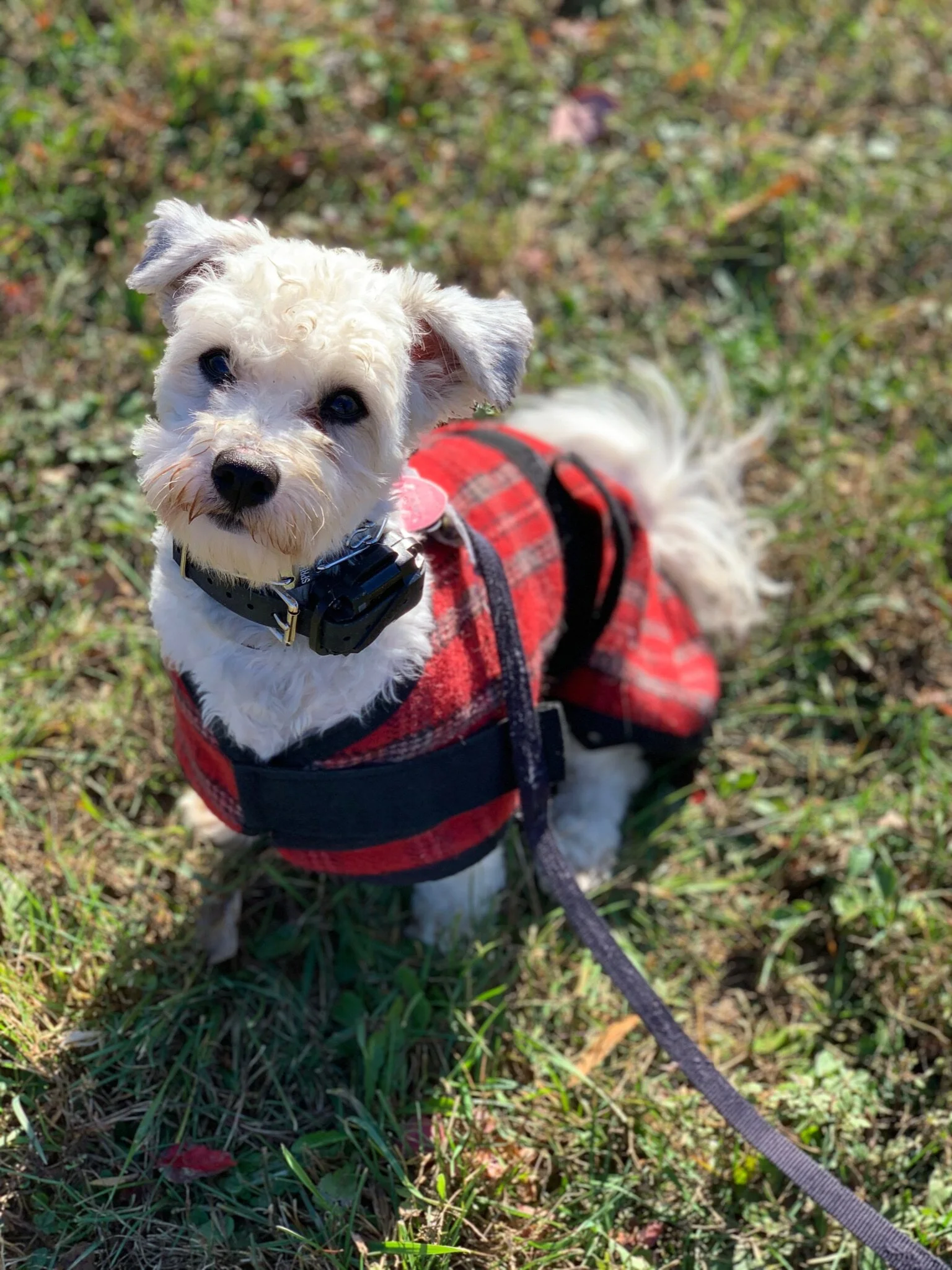Beau, a delightful little Havanese, is with me for a 3-week board & train. His adorable little self has attracted quite a bit of attention, which has prompted a few questions about his training equipment. I thought I’d take this opportunity to outline what type of equipment I use for a smaller dog and why.
Prong collar
As you can see from the photos, I still use prong collars on small dogs; however, what you may not be able to see is the size of Beau’s prong collar. Beau is wearing the Herm Sprenger 2.25”, also called a size small. This is the most common size for dogs under 50 pounds. Links need to be added or removed depending on the size of the dog’s neck. We definitely had to remove links for Beau but it still fits just fine. If I work with a dog who is too small for the 2.25, I’ll move to the micro prong. The micro is not made by Herm Sprenger, my preferred manufacturer of high quality prong collars, but it’s fairly easy to get from Leerburg and it’s well made.
If you’re wondering why I’d still use a prong collar on a small dog like Beau, I’d like to point out that one of the biggest myths about the prong collar is that it’s a harsh tool that is only appropriate for severe behavior cases. That’s not the case at all! When the prong collar is used properly, you’re controlling the amount of pressure the dog is feeling and you use only as much as you need to communicate with your dog at that moment. For the littles, that’s not much pressure at all! Thankfully, the prong collar has a broad enough range to accommodate any size dog. Same tool, same technique, just way less pressure.
E-collar
Beau is also still wearing an e-collar, just like any other board & train trainee. The only difference here is I’m using a Micro Educator instead of the mini educator (both from the E-Collar Technologies brand—my favorite!). According to the E-Collar Technologies website, the Micro receiver is “approximately 20% smaller, 20% lighter and 20% less stimulation” than the Mini. It’s appropriate for dogs 5 lbs and up, and it also has some features that allow for a better fit on a smaller dog.
Again, you may wonder why we’d need an e-collar on a little Havanese, but small dogs need clear communication just like any other dog! In Beau’s case, in the short time he’s been with his family he’s become a HUGE fan of door dashing—you know, darting out the front door and into the street. After a few close calls with vehicles, his family knew they needed to address this behavior for Beau’s safety. The training process will do a lot to address this tendency and help Beau develop healthier behaviors around open doors. E-collar training will be a part of that process, but more importantly, e-collar training will allow Beau’s family to communicate with him in a way that’s meaningful to him even when he’s in the midst of a mad dash. It may quite literally save Beau’s life! So yes, little dogs can and should be e-collar trained, too!
Leashes
Small dogs sometimes call for thinner leashes. The traditional leashes can be pretty darn heavy and the snap can weigh down the prong collar, putting pressure on it when you don’t intend to. When that happens, it’s important to seek out thinner, lighter leashes with smaller, lighter hardware.
Coats
And of course, as pictured, coats can be a training necessity for smaller dogs! This is only necessary if the weather is cool enough and you’re doing outdoor work. If you notice your dog is shivering, definitely get that sweet thing a coat, sweater, jacket, hoodie or whatever adorable source of warmth you’d like!


